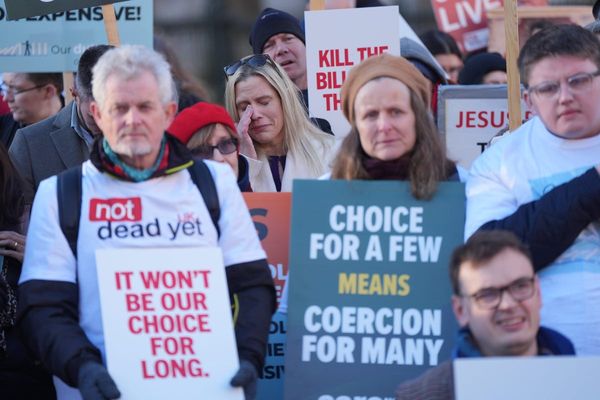
The new fund is certainly welcome because it addresses an important gap in climate-related financing. However, there is no denying that CoP-27 has disappointed on other crucial fronts. There is little progress on getting countries to tighten their emission trajectories to be consistent with the target of limiting global warming to +1.5° Celsius above the pre-industrial level. The delivery of international finance to developing countries to help them make the energy transition needed is also up in the air.

You might also like
The trouble with star ratings of packaged food
Headhunters scramble as hiring falls in Q3
India Inc's plunging cash flows are a bad omen
How Indian techies in the US manage their finances
Accelerating the pace of emissions reduction: CoP-26 was much applauded because it was the first time developing countries committed to reduce their emissions to net-zero by around mid-century. But the CoP-26 commitments were not sufficient to limit global warming to +1.5˚Celsius. All countries were therefore asked to come up with more ambitious commitments by CoP-27. Only 18 countries have responded thus far, including Australia, Norway, Korea, the UK, and developing countries like the UAE, Indonesia, Thailand and Brazil.
According to the International Energy Agency (IEA), the commitments made so far, if they are actually realized, could limit global warming by 2100 to +1.7˚Celsius. The qualification about actual realization is important because countries have announced targets but not specific measures that would ensure getting there.
The current situation is reflected in the graph. Global emissions dropped in the pandemic year 2020, but have recovered. They need to drop sharply for different ranges of global warming. We cannot assume this will happen, given the current policies in place and the uncertainty about financing to achieve the required transition.
The top-5 emitters together account for nearly two-thirds of global CO2 emissions. Among these, both the US and EU are showing a fall in emissions. Russia is flat-lining. But China’s emissions, the highest right now, are not yet falling. India’s have been rising, though at a decreasing rate. However, since they are much lower in per-capita terms than for other countries, some increase for a certain period is defensible. We have earlier argued (CSEP Working Paper #23) that the emissions trajectory promised by these countries at CoP-26 would take up almost all the remaining global carbon budget for +1.5˚Celsius. As this is unacceptable, they must consider a faster pace of emission reduction.
Today’s practice of relying on purely voluntary commitments is unlikely to yield results. We need to come to some agreement on what would constitute fair burden-sharing among these countries. One solution might be to limit a country’s claim in the remaining carbon budget in proportion to its share in the global population. This ignores past emissions, but it would reduce the emissions of the top-5 emitters to half the remaining budget. The US would have to get to net-zero by 2040, i.e. ten years earlier than its current target, the EU by 2045, and China by 2050. India too would have to advance its net zero target to, say, 2060-65. If the others agree to such sharp reductions, India could also agree.
Long-term net-zero dates need to be supplemented by medium-term targets. Each major emitter should perhaps be persuaded to announce an emissions target for, say, 2030. This would give a firmer indication of the downturn expected in global emissions over the next ten years, and also enable timely monitoring of countries’ performance with respect to their announced targets.
Financial assistance for developing countries: Developing countries can only get to net zero if they can transform their energy sectors away from fossil fuels to renewables and also promote shifts to more energy-efficient systems, such as from private to public passenger transport and from road freight to rail. This transition would involve massive investments in energy and other infrastructure and also policy interventions, like phasing-down of all fossil fuels, which India had proposed but could not be agreed upon.
The United Nations Framework Convention on Climate Change provides that developing countries must receive international financial assistance to help meet the additional cost involved. The ‘Sharm el-Sheikh Implementation Plan’ acknowledges that developing countries will need to invest at least a few trillion dollars by 2030, but it does not indicate what this means for international assistance.
On international assistance, it only “urges" developed countries to meet the $100 billion goal, which was to have been reached in 2020 and is now expected only by 2023. It is about time we acknowledged that the $100 billion figure is a red herring. First mentioned in CoP-15, back in 2009, it was unconnected with any estimate of the scale of the effort developing countries would have to make to deal with climate change. The scale of investments needed is now known to be much larger and the need for international assistance should be recalculated on this basis.
The Songwe-Stern-Bhattacharya report, which was submitted to CoP-27, estimates that all developing countries excluding China would need a total incremental amount of $2.4 trillion by the year 2030. The report acknowledges that all of this is not supposed to come from international assistance. More than half of the amount could be met through business-as-usual expansion of existing resources plus dedicated efforts for additional resource mobilization domestically. This still leaves about $1 trillion per year to be raised from international sources by 2030. This would have to come from a combination of public flows (both bilateral and multilateral) and private flows.
Multilateral development banks (MDBs) have a major role to play, not only in filling the gap, but more importantly in leveraging private flows through various forms of risk mitigation. The Implementation Plan offers no indication of the scale of the MDB effort needed. It only “calls" upon shareholders of MDBs and international financial institutions to reform their practices in order to raise climate finance to the scale required.
This reticence may reflect a recognition that the G20 is the appropriate international forum for deciding policy for MDBs and the G20 Summit in Indonesia has already asked these banks to discuss proposals made by the G20 Independent Review of MDBs’ Capital Adequacy Frameworks and deliver their conclusions for a spring meeting scheduled next year. If action to expand MDB flows is to be left to the G20, it puts India, which takes over the forum’s presidency, in a critical position. We could build on what Indonesia has started and work towards getting firmer commitments on expansion of MDB lending at the G20 summit next year.
A look at the figure shows why there is growing scepticism about whether the world will be able to reach its 1.5° Celsius target. It calls for a dramatic turnaround in the pace of emission reduction. We can be sure there will be a downturn as many steps are taken the world over. But will it be sufficient? It certainly won’t, unless adequate finance is made available to developing countries.
Montek S. Ahluwalia & Utkarsh Patel are, respectively, former deputy chairman, Planning Commission and currently distinguished visiting fellow at the Centre for Social and Economic Progress (CSEP), and associate fellow, CSEP.
Elsewhere in Mint
In Opinion, Parul Bajaj writes D2C healthcare segment can throw up new winners. Archana Dutta tells what blunts the edge of India's demographic dividend. Long Story details the growth formula for Indian farming.







